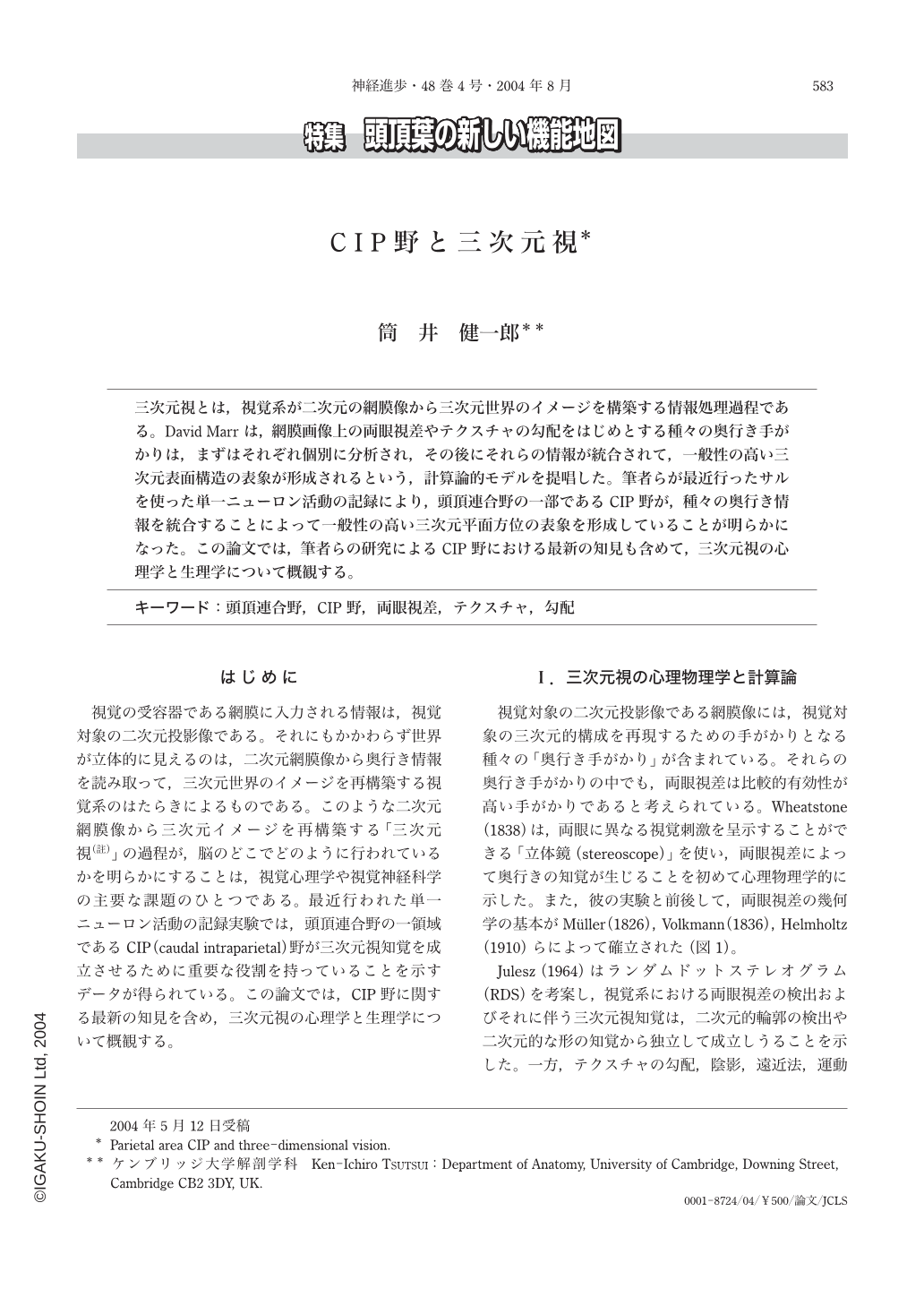Japanese
English
- 有料閲覧
- Abstract 文献概要
- 1ページ目 Look Inside
三次元視とは,視覚系が二次元の網膜像から三次元世界のイメージを構築する情報処理過程である。David Marrは,網膜画像上の両眼視差やテクスチャの勾配をはじめとする種々の奥行き手がかりは,まずはそれぞれ個別に分析され,その後にそれらの情報が統合されて,一般性の高い三次元表面構造の表象が形成されるという,計算論的モデルを提唱した。筆者らが最近行ったサルを使った単一ニューロン活動の記録により,頭頂連合野の一部であるCIP野が,種々の奥行き情報を統合することによって一般性の高い三次元平面方位の表象を形成していることが明らかになった。この論文では,筆者らの研究によるCIP野における最新の知見も含めて,三次元視の心理学と生理学について概観する。
The reason why we can see things in three dimensions is that the visual system is re-constructing the three-dimensional(3D)configurations of objects from their two-dimensional(2D)images projected on retinas. Clues for depth re-construction, which are embedded in the 2D retinal image, are called'depth cues'. It has been suggested by David Marr that, in the visual system, 3D surface orientation are firstly estimated independently from individual depth cues, such as binocular disparity and various monocular cues including texture gradients, and then the information from these different depth cues are integrated in order to construct a generalized representation of the 3D surface geometry. We recently found neurons in the parietal area CIP(caudal intraparietal)that are involved in constructing a general representation of 3D surface orientation by integrating the depth information from different depth cues. The objective of this paper is to have a psychological and physiological overview of the neural mechanisms of 3D vision, by reviewing recent studies including our findings in CIP.

Copyright © 2004, Igaku-Shoin Ltd. All rights reserved.


